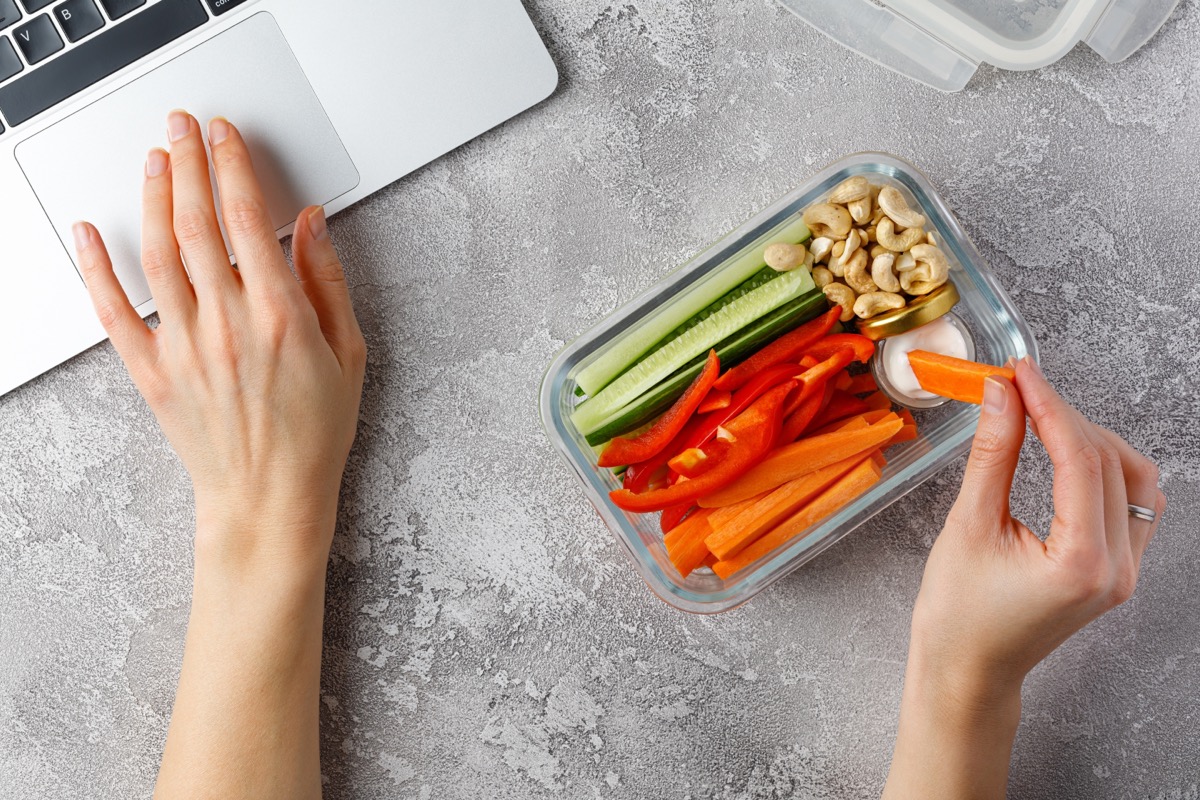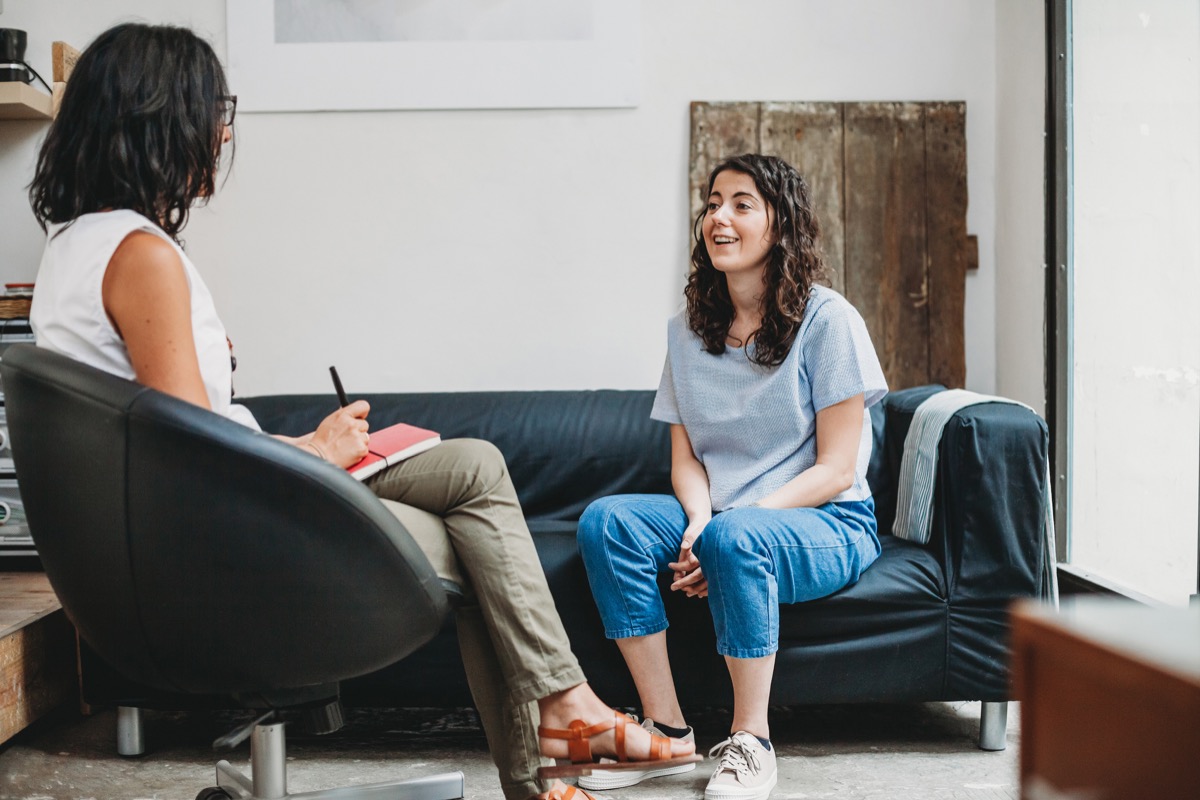15 Life-Changing Habits to Add to Your Wellness Routine
Experts from a premier wellness spa share their top tips.

Total wellness is about so much more than checking off the boxes of your health. Encompassing the physical, emotional, social, and spiritual, true wellness is when the various aspects of your life come into alignment to unlock a healthier, happier you. It's often said that you can change your life one habit at a time, but unless you know which wellness habits move the dial most, you may not know where to begin.
That's why we got on a plane and flew to Hilton Head Island in South Carolina to visit Hilton Head Health (H3), a premier destination for weight loss and wellness. We met with the experts on campus to find out which wellness habits they live by and share with their guests—many of whom come back year after year for insights and expert guidance.
Ready to change your life? Read on to learn the 15 surprisingly simple wellness habits that make the greatest impact, according to the H3 experts.
RELATED: Silent Walking Is the Latest Wellness Trend Everyone's Talking About.
1
Challenge your portion sizes and plate proportions.

You're not imagining it—portion sizes are continually growing, both in restaurants and at home. For many people, this results in "portion distortion," which can fuel weight gain, strain your heart health, increase your risk of certain cancers, and more.
Anne Poirier, the director of behavioral health at H3, says that reimagining your food portions and proportions is one of the most powerful ways to take charge of your wellness. If you're just getting started, try following the American Institute for Cancer Research's transition guide to the New American Plate. This can help wean you from a more traditional American diet built around meats and starchy vegetables, toward a more balanced plate that emphasizes whole grains, lean proteins, and non-starchy veggies.
According to H3's executive chef, Thomas Carrig, this doesn't have to be a chore. He suggests learning to cook a handful of flavorful vegetable recipes that you can genuinely enjoy using spices and seasoning blends that make your tastebuds sing.
RELATED: I Tried Gwyneth Paltrow's Top 5 Wellness Tips and Spent Less Than $5.
2
Build in "structural flexibility."

One of the first things to do when you begin any new wellness routine is to set "SMART goals"—ones that are specific, measurable, achievable, relevant, and time-based. However, Poirier says that it's also a good idea to build "structural flexibility" into any health plan so that you aren't derailed by minor deviations.
For instance, you may decide that it's OK to eat your favorite dessert on occasion—as long as you take the time to savor it, and try not to make the decision to have it impulsively. By planning for hiccups and exceptions, you're more likely to keep returning to your healthy eating habits time after time.
RELATED: 10 Ways to Feel Calm and Happy (That Aren't Meditation).
3
Use the "FITT" model for exercise.

When it comes to exercise, there's a more specific way to build in structural flexibility. Poirier recommends thinking about each physical activity in terms of "frequency, intensity, time, and type" (FITT). This way, when you can't follow your normal wellness plan, you can modify specific aspects of your workout without discarding the entire habit.
For instance, you may not have time for your daily, 30-minute morning run, but you may still be able to take a 15-minute afternoon walk. In that case, you would have modified the intensity and time, but not the frequency or type (cardiovascular exercise). By preserving some aspects of the habit, you will likely find it easier to resume your original plan later.
RELATED: 8 Simple Exercises That Will Make Your Joints Feel Better.
4
Make behavior-focused goals.

While many people find it motivational to keep their eye on the prize, Poirier recommends giving at least equal attention to the behaviors that get you there.
For instance, you don't necessarily need to set a goal to lose a certain amount of weight and measure your success against the scale. Instead, try measuring your success by how often you meet your exercise goals, or how often you eat a well-balanced meal.
5
Sleep when you get sleepy.

Tyler Bostic, a fitness coach and manual therapist for H3, says that another way to prioritize your wellness is to prioritize sleep. You can do this by listening to your body and becoming more attuned to its natural rhythms.
"If you're sleepy, that means it's time to go down—don't wait for a set bedtime or you may miss your window," he tells Best Life. "Wake up naturally, without an alarm whenever you can," he adds.
RELATED: Jillian Michaels' 7 Best Motivation Secrets for Exercising Outside.
6
Focus on workout quality, not quantity.

According to Bostic, physical fitness is 80 percent diet and 20 percent exercise—but what you do with that 20 percent matters.
Rather than working out rigorously and often, which can lead to burnout and quitting, he recommends doing a full-body exercise for 20 to 40 minutes every third day. The key, he says, is to balance cardio, strength, and flexibility with four types of movement: push exercises, pull exercises, core-strengthening exercises, and lower body exercises. On off days, you can stay active by simply walking, he says.
RELATED: 8 Ways to Motivate Yourself to Take a Daily Walk.
7
Create a "Fit Bite" station.

Next, Poirier recommends considering how your home environment might be sabotaging your healthy eating goals. Since healthy snacking is such a common struggle, she recommends setting yourself up for success by creating a "Fit Bite" station.
At Hilton Head Health, this is a designated snack area that's stocked with pre-portioned, healthy snacks like carrot sticks, hummus and veggies, yogurt, fruit, and more. "Our environment will always drive our behavior," says Poirier.
8
Stop compensating for "slips."

When it comes to health and wellness, progress is almost never linear. By expecting and planning for failure and even embracing it as part of the process, you may find it easier to make your way back to a healthy path time and time again.
Poirier says that at H3, the team recommends against compensating for "slips" in your health and wellness routine. For instance, if you find yourself eating several slices of cheesecake one day, don't try to set things right by restricting or exercising excessively the following day. Instead, remind yourself of the original plan, and get back to business as usual.
RELATED: 7 Surprising Benefits of Taking Magnesium Every Day.
9
Stay focused on your successes.

Improving your health and wellness is often easier said than done. However, Poirier tells Best Life she believes that "success begets success," and that a positive attitude—especially toward yourself—can go a long way.
The more you can recognize how far you've come, the easier it will be to build on those previous successes and pave a healthy path forward, she adds. Try keeping a journal of your successes to keep them top of mind.
RELATED: 10 Affirmations to Feel Great About Your Body at Any Age.
10
Make your mental health a priority.

Your physical and mental health are deeply intertwined. If you're moving your body, eating well, and sleeping, you're already laying the groundwork for more happiness and less stress and anxiety.
However, focusing on your mental health explicitly—whether through therapy, meditation, or other means—can truly transform your life. You can begin by making a list of the resources, activities, and tools that help you process hard feelings, release stress, quiet negative self-talk, or improve the quality of your relationships.
11
Create a master calendar of health screenings.

It's hard to overstate the importance of staying on top of your scheduled health screenings. That's because by using routine screening exams and scheduled blood panels, you're more likely to discover health conditions when they're still in their earliest, most treatable stages. Make it a habit to check in with your doctor to learn more about various screenings available to you, and get regular checkups.
12
Book-end the day with wellness.

One of Poirier's favorite wellness habits is to book-end the day with acts of self-nourishment. To do this, you simply need to come up with a brief wellness routine for the morning and another for the evening. By framing your day in healthy self-care habits, you're more likely to make good choices throughout the day, the wellness expert notes.
Begin by asking yourself, "How can I set my day up for success?" You might plan your morning around a cup of coffee, 10 minutes of meditation, some positive affirmations, and walking the dog. Then, do the same for the evening hours. You might wrap up your day with exercise, a centering activity such as coloring, a bath, and a purposeful sleep routine.
RELATED: 10 Things the Happiest People Do Every Morning.
13
Stretch at least twice a day.

Bostic recommends stretching twice a day—and says the activity makes a perfect addition to your "wellness bookends."
"The best time to stretch is first thing in the morning and before you go to bed because we're in a fixed position throughout the night. It's when we're most stiff," he explains.
RELATED: 5 Morning Stretches That Will Instantly Boost Your Energy, Experts Say.
9
Banish "all or nothing" thinking.

In health and wellness, we often think of things in terms of black and white. Poirier says this sort of "all or nothing" thinking can leave you trapped in a cycle of high goal setting, perceived failures, and derailment.
Instead, the wellness expert recommends focusing on what you can do and what you do have time for. For instance, instead of saying "I only have 10 minutes, so I can't do my usual workout," try saying, "I have 10 minutes, and 10 minutes of movement is always better than 10 minutes of sitting."
RELATED: 8 Daily Affirmations to Send Your Confidence Skyrocketing.
15
Unplug and get out into nature.

Finally, if you spend the bulk of your time sitting down and tied to technology, you may find it difficult to incorporate wellness habits into your everyday life. Poirier recommends making a conscious effort to unplug from your devices whenever possible and spend some portion of the day in nature if given the opportunity.
"A lot of people find themselves stressed and overwhelmed by technology and social media—especially young people," she says. Spending less time in front of a screen and more time with the wind in your hair can do a world of good.
For more wellness tips sent directly to your inbox, sign up for our daily newsletter.





















